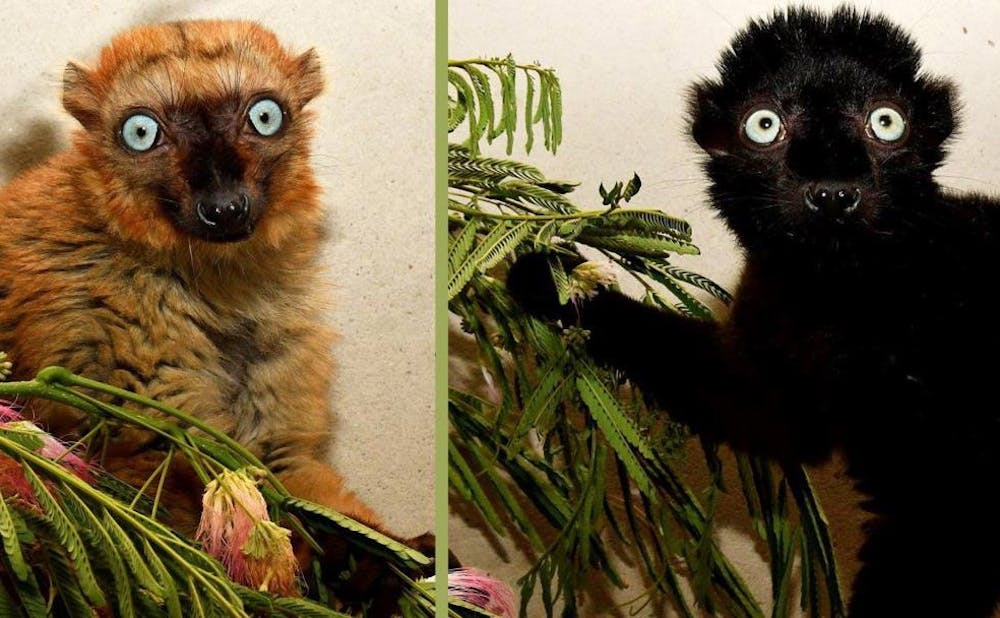Having a ton of new first-years on campus is cool—but the arrival of two new furry friends at the Duke Lemur Center is just as exciting. Plus, they don't even crowd the buses.
Five-year-old male Mangamaso and 3-year-old female Velona are the Lemur Center’s newest residents, arriving from nature center Parc Ivoloina in Madagascar after three years of planning and 60 hours of travel. The two blue-eyed black lemurs are part of a critically endangered species and will help improve the gene pool of the species at the Lemur Center.
“The populations that we have and that Europe has and that Parc Ivoloina has are a genetic safety net for this species,” said Sara Clark, director of communications at the Lemur Center. “Even if they do go extinct in the wild, we have these lemurs here that are genetically healthy.”
Blue-eyed black lemurs are one of the world’s 25 most threatened primates, and in 2015, scientists estimated that the species could become extinct in the wild within 11 years. There are currently fewer than 1,000 wild blue-eyed black lemurs.
Mangamaso and Velona will help increase the genetic diversity of the Lemur Center’s population. Before their arrival, every blue-eyed black lemur in North America—about 28 living in zoos and conservation facilities—descended from seven lemurs imported by the Lemur Center in 1985 and 1990.
Genetic diversity leads to increased health and immune responses as well as improved ability to adapt to environmental factors, Clark explained.
“If you don't have a genetically diverse population, you start running into problems,” she said. “Sometimes lower birth rates are related to low genetic diversity.”
The lemurs’ 9,000-mile journey was a complicated one due to strict import and export regulations. Their transfer is the first time in 24 years that lemurs have been imported from Madagascar to the U.S.
“We’re all relieved that this happened,” Clark said. “It was so much work, and for a while it looked like it wouldn't happen at all, but it all came together.”
The transfer agreement involved the government of Madagascar, Parc Ivoloina, the American Association of Zoos and Aquariums Species Survival Program and the European AZA Endangered Species Program. The Duke Lemur Center transferred two of its blue-eyed black lemurs to France to help the European breeding program as part of the negotiations.
Mangamaso and Velona needed more than just a passport for their trans-Atlantic journey—their transport required 19 separate documents including authorizations from Madagascar wildlife authorities, veterinary certificates and arrangements with the Centers for Disease Control and Prevention.
The lemurs did get to ride in style, as a Fuqua School of Business alum who lives in Madagascar let the lemurs borrow a private plane to travel from Parc Ivoloina to Antananarivo, Madagascar’s capital city. This quick flight meant that they bypassed a 10-hour drive over the country’s bumpy roads.
From there, Lemur Center veterinarian Cathy Williams accompanied the animals on their flight to U.S. Afterward, they were kept in quarantine for two months to make sure they were healthy and free of disease before arriving at the Lemur Center.
Mangamaso and Velona are getting adjusted to their new home and are visible from the tour path, Clark said.
“If people make a reservation, it’s very possible they’ll be able to catch a glimpse of those two,” she said. “They do tend to be out and visible—they love people watching.”
Get The Chronicle straight to your inbox
Signup for our weekly newsletter. Cancel at any time.

